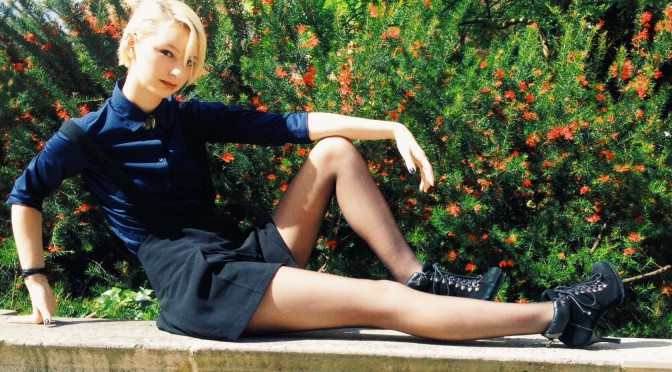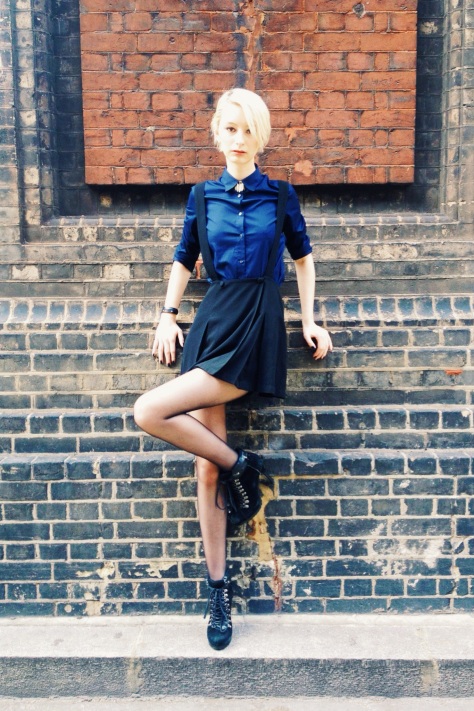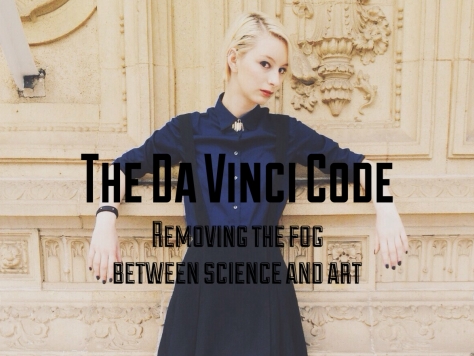Geek chic is a look that has been done many times, and all too often seems to revolve around a pair of glasses and a button-up shirt. Although I wanted to keep elements of this, I also wanted to portray the modern ‘geek’, someone who is more than just books and libraries, someone who I would identify with, and whose outfit I would want to wear. I also didn’t want the look to be too androgynous or masculine as too often intelligent women are seen as intelligent despite their femininity, whereas in fact many are both intelligent AND feminine – one does not negate the other.


Even though the official colour of Imperial College London is purple, we’ve got navy blue everywhere, and my deep imperial blue Uniqlo shirt was one of the first pieces I knew I wanted to include, accessorising with my brass feather necklace (a charity shop find). Initially I was going to pair this up with a pair of dark trousers – but I own mainly jeans, and as soon as I tried that ensemble on I knew it wasn’t going to work. After being stuck for a while, I opened up my cupboard to browse, and as soon as I saw the black pleated school-style Topshop skirt I knew it was meant to be.
As always, it was then the eternal question of what shoes to wear – heels to make it classy, DMs to punk it up, Converse to make it fun. In the end, I wanted to go with a strong feminine edge, so it was my (surprisingly comfy) lace up heels.
The whole look ended up being quite a slick/glam geek chic look, which I liked – it most definitely wasn’t the stereotype of the physics student stuck in the library, but the type of girl who can is intelligent and attractive, fashionable and bookish – like geek girls most definitely are.
Once again, most of the stuff I’m wearing is no longer available in stores; the Uniqlo shirt and Topshop skirt are both from previous seasons, although I’m sure you can find similar garments in store now. The brass feather necklace was a charity store find, so I have no idea where that’s from, and the heels are from Office, but from at least five years ago (if you find any like them, please tell me as they’re falling apart and I want new ones!). Finally, the backed seamed tights were from trusty old M&S who are really great when it comes to that sort of thing.
We (meaning me and the fabulous Freya, who you should definitely follow on twitter and instagram) shot this look out and around Imperial, in an area colloquially known as ‘Albertopolis’, which encompasses the Albert Hall and the surrounding areas such as the museums. We were very lucky with the weather – about half an hour before we shot this in the dazzling sun it was raining! It’s such a great area to shoot in – there’s so much great architecture, and even the brickwork is fabulous. There’ll definitely be future shoots done around there, both because of the beauty, and because it’s right around the corner from my halls!





